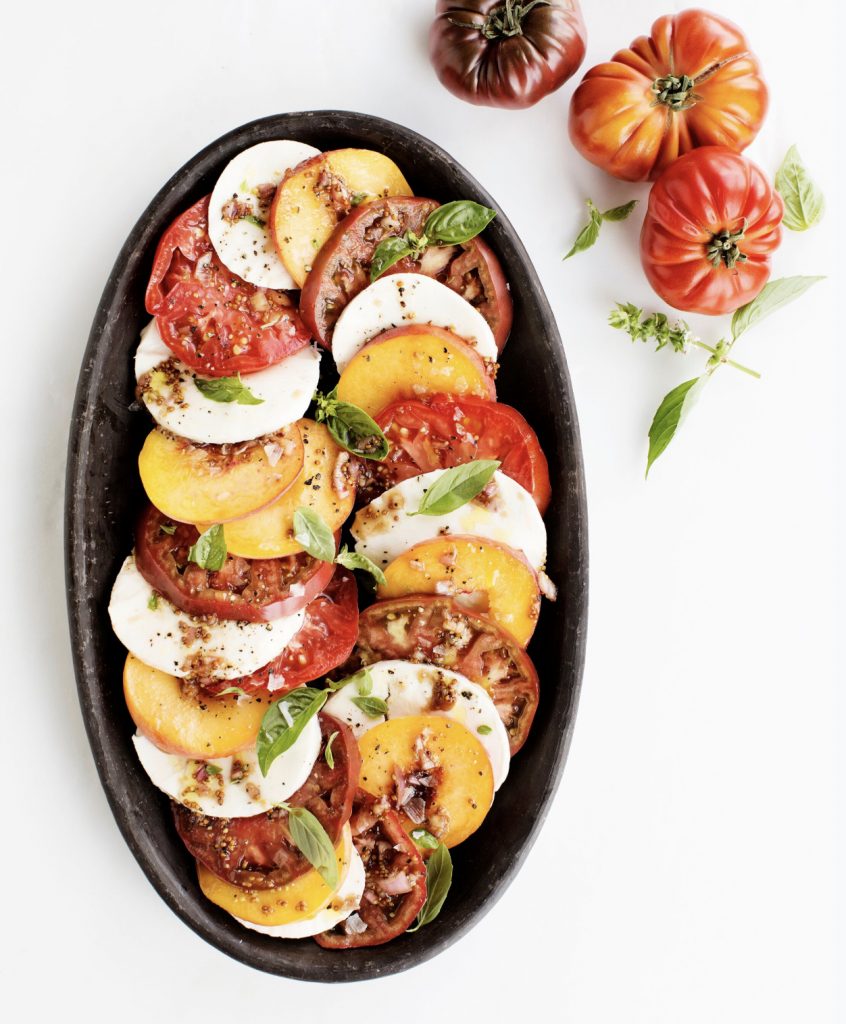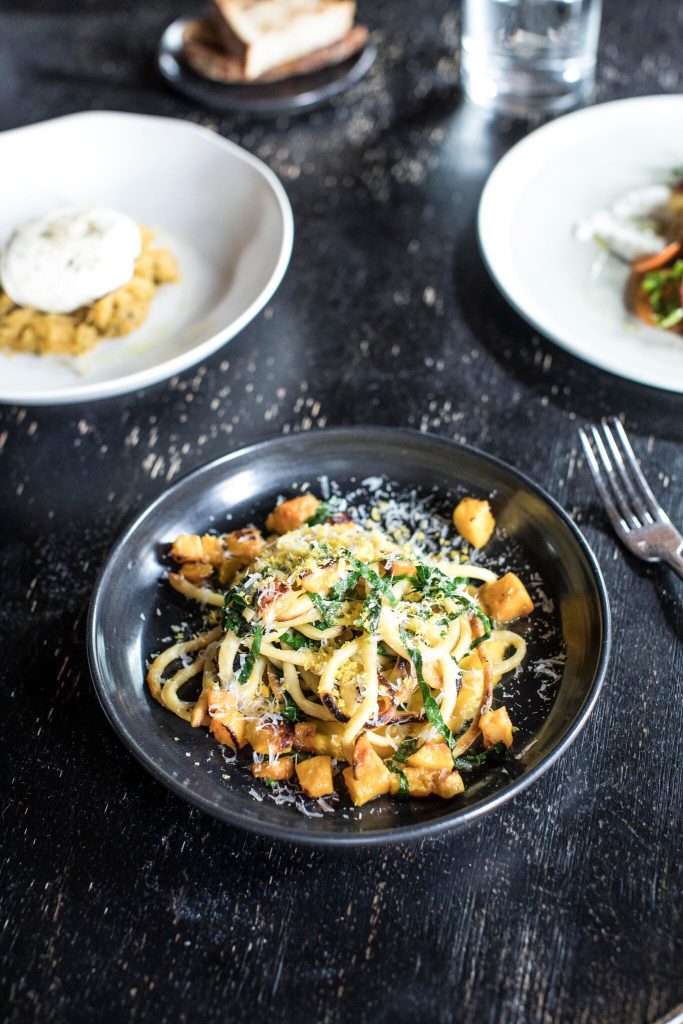
You’ve probably driven by this unassuming brick structure a million times. I certainly have, whether on my way to the Farmer’s Market at Bicentennial Mall or Sounds games at First Tennessee Park, but I never would’ve guessed this one-story building at the southwestern end of the Jefferson Street Bridge holds as much history as any in Nashville.
John Geist Sr. emigrated from Germany in 1874 and in 1886 built a modest frame house on the edge of Germantown (which, it turns out, actually hosted Germans at one point!). Around the turn of the century, the family upgraded to the brick structure that currently stands, and for the next hundred years, the Geists operated a series of businesses that trace the path of modern industry. They first opened as a blacksmith shop, forging horseshoes and wagon wheels. As horse-powered shifted to horsepower, they used the forge for ornamental ironwork. Geist Jr. taught the trade to his sons, and the family eventually added lawn mower repair to their services. The site was listed on the National Register of Historic Places in 1980, and when the Geists finally sold the building in 2006, it was the longest family-owned and operated business in the city. But by 2012, after some years of neglect, the site ended up on a different list: Historic Nashville’s nine most endangered historic properties.
Geist in German can mean “ghost” or “spirit,” which is oddly fitting, considering the family name—along with the once-maligned site—will live on through its next iteration as the home of Geist, Nashville’s newest fine dining establishment.
Taking full advantage of an artfully renovated interior, owner Doug Martin and local architect Anne Marie Garcia of Sobremesa Design have created a space that lets the historic building speak for itself. Brick walls divide the floor into three distinct areas, but expansive cutouts in each wall keep a consistent flow and prevent any sense of stuffiness. The bar sits perpendicular to a wall of windows built into the arched doorway through which horses once entered. Next to the kitchen is a private dining room, focused around a table for twelve, and between the more intimate space and the bar is the main dining room. Many of the tables here feature cozy wingback chairs, and waiting for me at one of these is Geist’s chef, Josh Stockton.
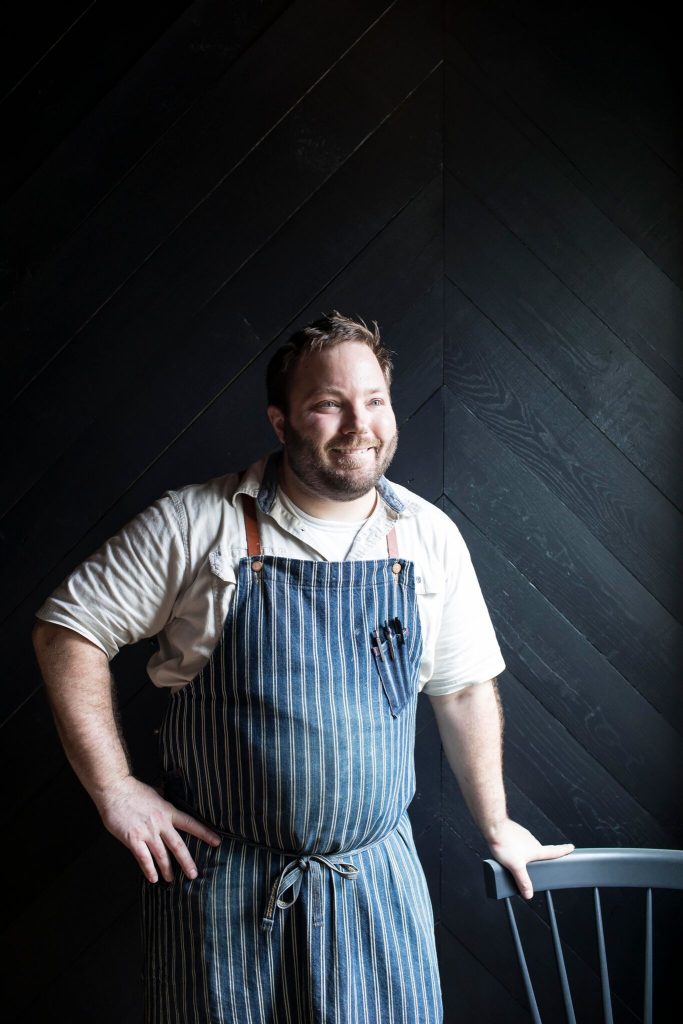
Though he’s only thirty-five, Stockton’s road to Geist has been long and winding. “I bounced around,” Stockton tells me. “I went from Michigan to New York to Hawaii, back to New York to Las Vegas to Tennessee the first time, back to Las Vegas, back to Detroit where I’m from originally, back to Las Vegas, and then finally out here.”
Stockton’s first foray to Tennessee had him working at Blackberry Farm, a luxurious resort in the Smoky Mountains. Stockton’s parents run a farm in Gainesboro, a tiny town in Jackson County outside of Cookeville, and his brother’s also a chef, now working at Blackberry Farm’s sister property, RT Lodge, near Knoxville. Stockton’s dad was a chef too. “My dad worked at an Italian restaurant owned by a Sicilian family. My first job was, he woke me up my first [day] of summer vacation, I think when I was twelve or thirteen. He’s like, ‘You’re goin’ in. You’re gonna make pasta with the owner’s grandmother and mother and sisters’ . . . That was my indoctrination.”
I settle back into the plush chair as Stockton tries to put into words how much he loves cooking. “It’s the only job I’ve ever had,” he relates. “I’ve never held a job that wasn’t in a restaurant or a kitchen or a butcher shop of some sort . . . The only thing I ever really enjoyed was food and working with food. What we get to do here is fun.”
Though it sounds like he’s enjoying himself at the moment, I wouldn’t blame him for feeling overwhelmed—Stockton and his wife, Amanda, only arrived in Tennessee in February. In less than three months, he’s gotten a restaurant off the ground, plus Amanda is expecting their first child in June. After he explains all this to me, I ask Stockton if he’s taken a breath recently. “No,” he replies with a laugh. “Not since the restaurant opened!” Right now he’s “only” at Geist from 9 a.m. until after 10 p.m. “And that’s actually lighter than the first couple weeks, which was more like 8 [a.m.] to 12 [a.m.]. So we’re getting there,” he states matter-of-factly.
The Geist team also includes Freddy Schwenk and Matt Buttel of Nashville Ice Lab running the cocktail program, and thus far, the bar has been the engine driving much of their business. “That bar is always three people deep!” Stockton says with some surprise. “Those lounge tables are always full. It is jam-packed.”
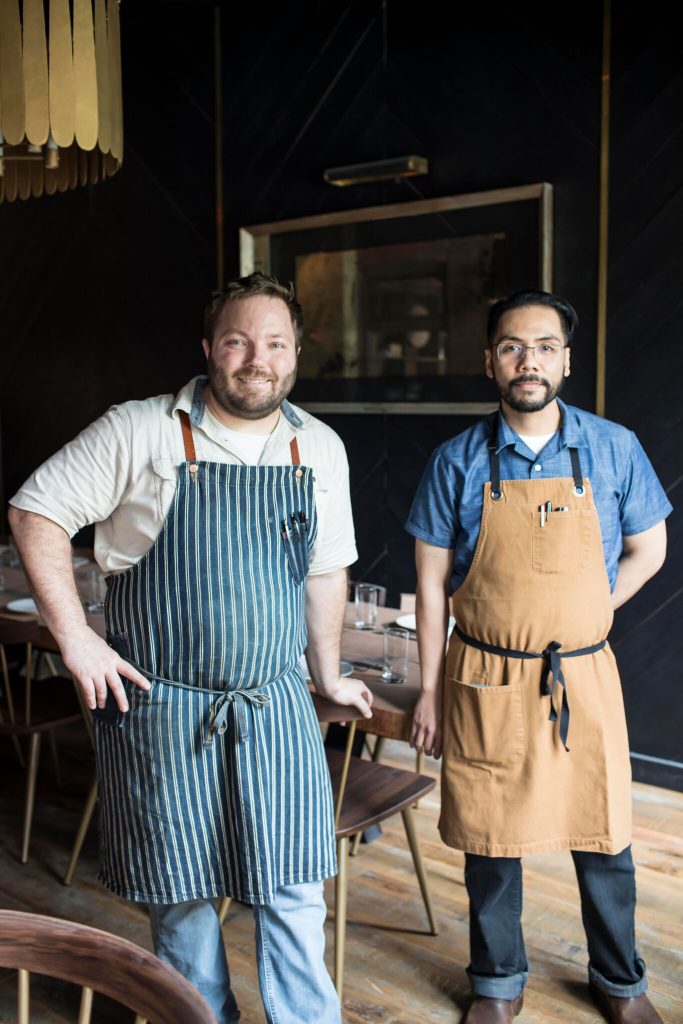
In Cooking by Hand, Paul Bertolli writes, “The task of keeping food vibrant and interesting, particularly food that belongs to a long tradition, is the challenge of any cook, professional or amateur.” The book is one of a handful concerning food and cooking that Stockton lists as his essential texts.
I’ve returned to Geist to see the ways that the chef keeps his food vibrant and interesting, and to check out how the space functions on a crowded weekend. Even though it’s unseasonably cold and raining hard, the bar is indeed packed as reported. And because it wouldn’t be Nashville otherwise, there’s even a (thankfully small) bachelorette party. I linger at the door, looking out at a gorgeous patio space built in part with bricks from the Geist home. With a wood fireplace and espaliered trees lining the edges, it’ll be a lovely space once it warms up.
My wife and I are seated in two of those comfy wingback chairs. Our corner is lit by candles cradled within the wall openings between rooms. The bustling bar is no more than fifteen feet away, and the private dining room hosts a party of twelve that’s mushroomed into a rowdy table for sixteen, but somehow amidst the chaos, our spot’s surprisingly quiet and feels intimately ours.
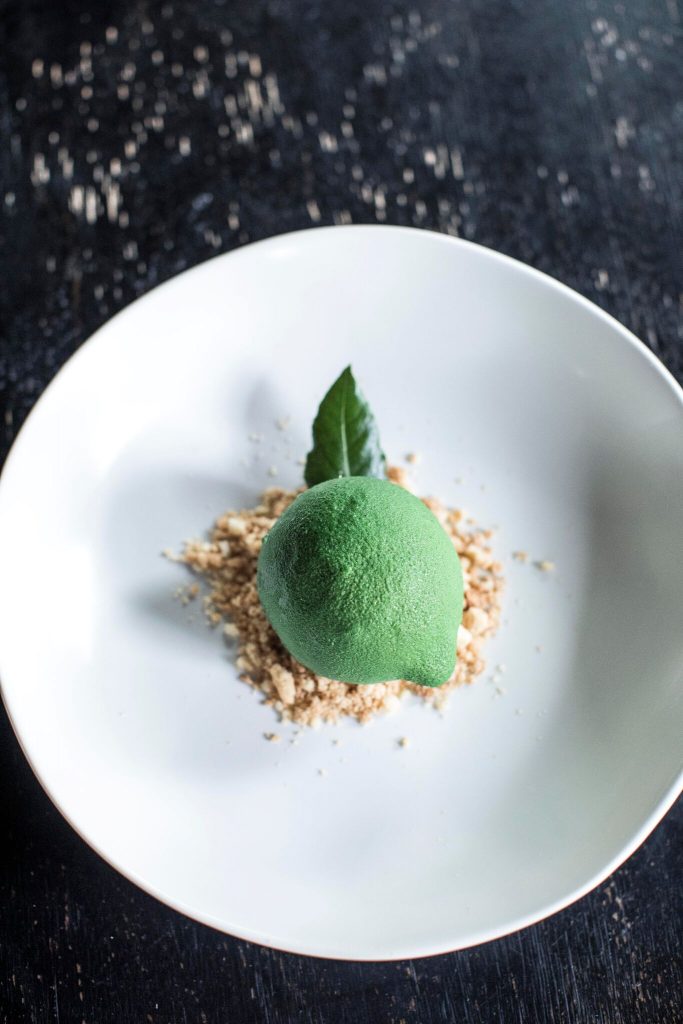
We dive into a cocktail, the Oaxacan Old-Fashioned, with reposado tequila, mezcal, agave, and bitters, and the Ice Lab provides the drink with a block of ice stamped with a capital G. I order from the spirit-free section of the beverage menu, enjoying a Dark & Stormy featuring locally brewed ginger beer, vanilla, and activated charcoal for color.
As we work on our drinks, a plate of rolls come and are quickly gone. The rolls, like all the baked goods, are made in-house by pastry chef Andrew Dean Gallagher. Gallagher is slammed in the kitchen, but he emails me after the meal to explain that, like Stockton, food was an early obsession. “I started cooking at a young age. I found myself spending more time in the kitchen experimenting and ‘cooking’ than I did outside playing with the other children. Cooking was just something I did. It’s normal and as familiar to me as writing my name.” The rolls are soft and airy, and a side of lemony butter doesn’t hurt them. I’m sad when the butter leaves.
But there’s so much more to come. Stockton’s beef tartare has a spicy, earthy kick from horseradish and comes with these adorable nickel- and dime-sized potato chips. His burrata oozes out across a layer of spaghetti squash that sits atop thick slices of griddled bread (more excellence from Gallagher there). A spectacular pasta pairing features an enormous raviolo with mushroom conserva on one plate, and on the other, a pici pasta—fat, hand-rolled noodles served al dente and lightly grilled, with butternut squash and greens cooked with cured egg yolk for a potent umami burst. We’re starting to fill up, but the polenta arrives, soaked for two days in white wine, stock, and citrus, then seared and topped with sour onions and pine nuts. We can’t say no to that, nor can we refuse our final main, a confit chicken, just perfectly moist in every bite, alongside white beans and a wonderful house-made chicken sausage that shows off Stockton’s skills as a butcher.
We finish with a dessert from Gallagher that’s as much an adventure as it is a dish. When it comes to the table, it looks like a perfectly spherical lime served on a pile of dirt. We use gold spoons to crack the “lime,” which is actually a bright green shell of white chocolate, and a key lime custard collapses into the “dirt” (crumbled graham crackers). The pastry chef writes later: “The philosophy and thinking behind it was to answer the question of ‘How do I do key lime pie without it being key lime pie?’ As a chef, I like to challenge myself and ultimately, the guests, to go beyond what is expected.”
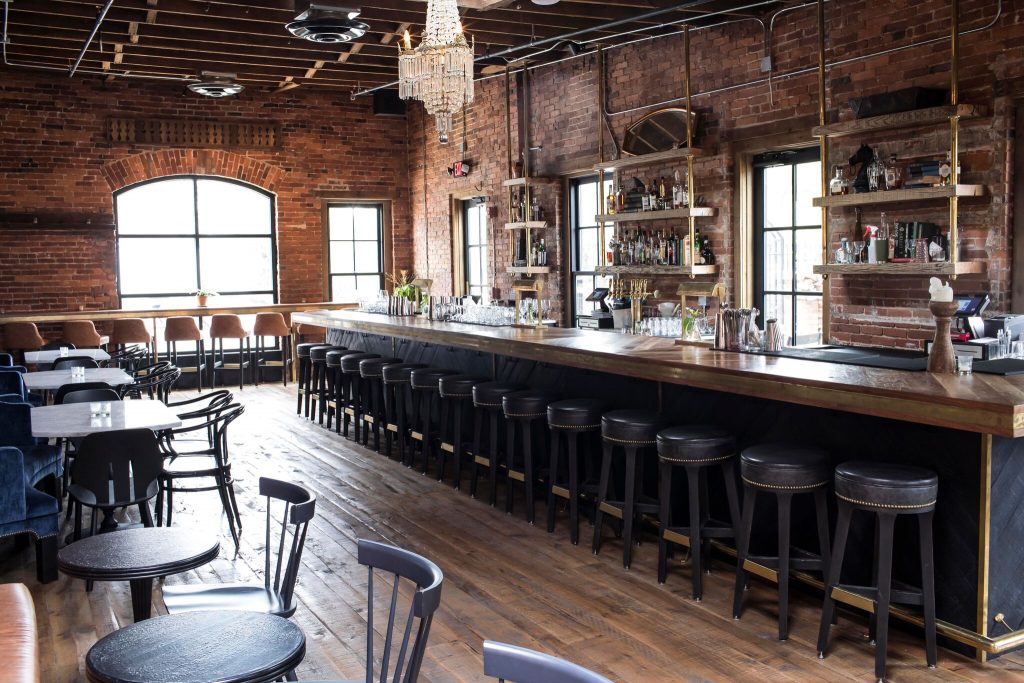
In another of Stockton’s best-of books, The Third Plate, Dan Barber says in regards to cooking: “The greatest lesson came with the realization that good food cannot be reduced to single ingredients. It requires a web of relationships to support it.”
Stockton has taken that lesson to heart: the team behind Geist has built their own culinary web to create a multisensory feast. Their delicate renovation acknowledges and celebrates the long, rich life of this historic space; and the partnership between Stockton, Gallagher, and Ice Lab allows Geist to cater to all kinds of people and parties.
The Geist family once made first-rate products here, or at least I figure, since they wouldn’t have lasted so long otherwise. You can still find examples of their fine ironwork at the gates of a local church or two. Stockton seems a worthy descendant to their craftsmanship: “My food philosophy is, I just like to work with quality ingredients. I like to give them the care and time they deserve, and I think every food can be done well.”
Geist is open Wednesday through Friday 5:30 p.m. to 12 a.m., Saturday 2 p.m. to 12 a.m., and Sunday 11 a.m. to 6 p.m.
Suggested Content
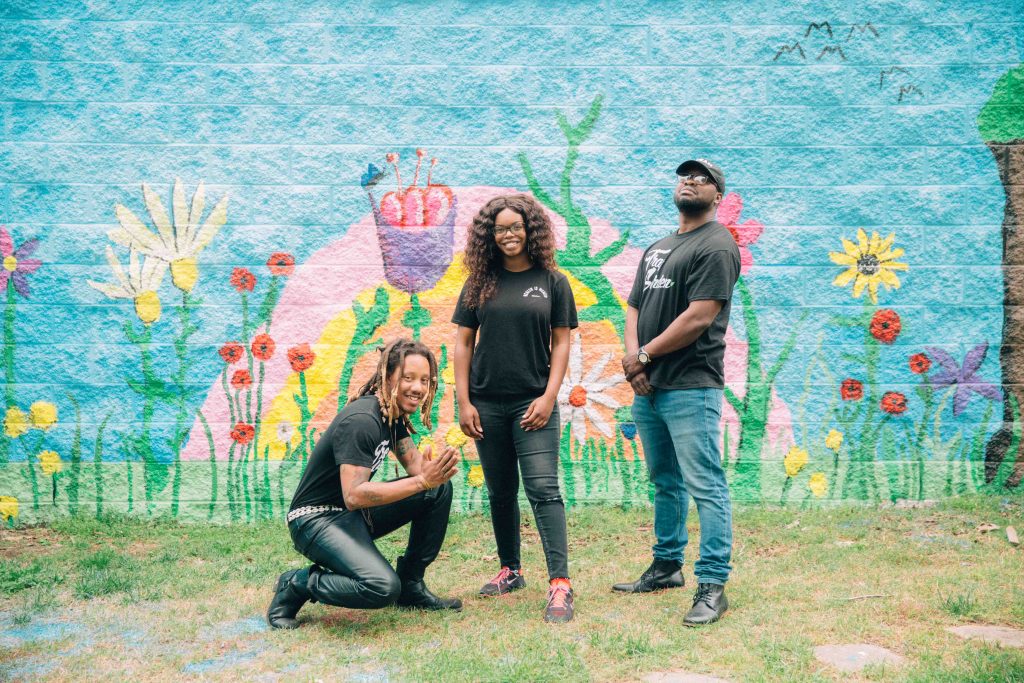
Can You Dig It?
How urban farming nonprofit Trap Garden is working to eradicate Nashville’s food deserts

Double Scoop of Happiness
Kokos Ice Cream creators Jerusa van Lith and Sam Brooker want to show you just how good ice cream can be.

